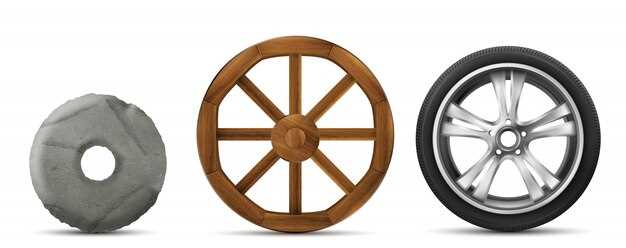
In the world of automotive enhancements, the choice of wheels can significantly impact not only the performance of a vehicle but also its overall appeal. Among the myriad options available, lightweight alloy wheels have gained popularity for their potential advantages. However, many drivers wonder if investing in these wheels truly offers substantial savings and benefits in the long run.
The primary feature that sets lightweight wheels apart is their reduced weight compared to traditional steel alternatives. This integration of materials like aluminum and magnesium not only contributes to a sleeker appearance but can also lead to improved fuel efficiency. Drivers often overlook how a decrease in wheel weight translates to better handling and acceleration, which can enhance the overall driving experience. Additionally, the way lightweight wheels affect a vehicle’s suspension can result in less wear and tear, offering further savings on maintenance costs.
Moreover, while the upfront cost of upgrading to lightweight alloy wheels may seem daunting, the long-term benefits can outweigh this initial expense. By reducing the rotational mass, these wheels require less energy for movement, which can lead to improved fuel economy. For those who drive frequently or cover long distances, these increased efficiencies can lead to significant savings over time, making lightweight wheels not just a performance upgrade but a financially sound investment as well.
Understanding the Performance Benefits of Alloy Wheels

Alloy wheels are increasingly popular among drivers due to their significant performance benefits over traditional steel wheels. One of the most notable advantages of alloy wheels is their reduced weight. Lighter wheels can enhance a vehicle’s responsiveness, allowing for quicker acceleration and improved handling. When a wheel is lighter, it requires less energy to move, which can also contribute to better fuel efficiency.
Moreover, the composition of alloy wheels, often made from a combination of aluminum and other metals, leads to superior heat dissipation. This is crucial during high-performance driving when brakes generate a considerable amount of heat. Efficient heat management results in better braking performance and reduces the risk of brake fade, providing a safer driving experience.
In addition to their weight benefits, alloy wheels come in a variety of designs that can enhance the overall aesthetic of a vehicle. They not only improve performance but also add a stylish touch, making them an appealing choice for many drivers. Ultimately, investing in alloy wheels can yield significant performance enhancements, making them a smart choice for those looking to elevate their driving experience.
Calculating Weight Savings and Their Impact on Fuel Efficiency
When considering the purchase of lightweight alloy wheels, drivers often focus on performance and aesthetics. However, one crucial aspect that should not be overlooked is the significant weight savings these wheels can offer and their direct impact on fuel efficiency.
Every vehicle’s fuel efficiency, measured in miles per gallon (MPG), can be influenced by the rotational mass of the wheels. Lighter wheels require less energy to accelerate, which can lead to improved fuel economy. Here’s how to calculate potential weight savings and their effects:
- Identify the Weight of Stock Wheels: First, determine the weight of your current wheels. A typical stock wheel may weigh around 20-25 pounds.
- Determine the Weight of Alloy Wheels: Next, look for the weight of the alloy wheels you plan to purchase. Many lightweight alloy wheels weigh around 15-18 pounds.
- Calculate Total Weight Savings: Subtract the weight of the alloy wheels from the weight of the stock wheels. For instance, if the stock wheels weigh 25 pounds and the alloy wheels weigh 15 pounds, the savings would be:
- 25 lbs (stock) – 15 lbs (alloy) = 10 lbs savings per wheel
- Account for All Wheels: Multiply the weight savings per wheel by the total number of wheels (usually four). For our example:
- 10 lbs savings x 4 wheels = 40 lbs total savings
- Assess Fuel Efficiency Impact: Experts estimate that reducing vehicle weight can improve fuel efficiency by approximately 1-2% for every 100 lbs saved. Thus, with a total savings of 40 lbs:
- 40 lbs ÷ 100 lbs = 0.4%
- This translates to a potential fuel efficiency increase of about 0.4%.
While this percentage may seem modest, it accumulates over time and distance. For example, if you drive 15,000 miles annually and your vehicle achieves 25 MPG, every 0.4% increase would help you conserve more fuel:
- Total gallons consumed without savings: 15,000 miles ÷ 25 MPG = 600 gallons
- With a 0.4% improvement: 600 gallons x 0.996 = 597.6 gallons
- Annual savings: 600 gallons – 597.6 gallons = 2.4 gallons saved per year
- At a gas price of $3 per gallon, this equals a saving of about $7.20 annually.
In conclusion, investing in lightweight alloy wheels not only enhances the aesthetic and performance aspects of your vehicle but also provides substantial weight savings, leading to improved fuel efficiency. Over time, these benefits can translate into noticeable savings at the pump, making it a smart investment for many drivers.
Evaluating Cost vs. Long-term Advantages of Lightweight Wheels

When considering the investment in lightweight wheels, it is essential to analyze both the initial cost and the long-term advantages they offer. Lightweight alloy wheels significantly reduce the overall weight of a vehicle, which can lead to various performance benefits. While the upfront cost of these wheels can be higher compared to standard options, the potential savings in fuel efficiency and tire wear can offset this expense over time.
The weight reduction achieved by switching to lightweight alloy wheels allows for improved acceleration and handling. This improved performance not only enhances the driving experience but can also lead to lower fuel consumption. Over the vehicle’s lifespan, these savings on fuel can accumulate, making the investment more economically viable.
Moreover, lightweight wheels typically result in reduced strain on suspension components, potentially extending the lifespan of these parts. By analyzing the total cost of ownership, including maintenance and fuel expenses, drivers can see that the advantages provided by alloy wheels can outweigh the initial financial outlay. Ultimately, the decision to invest in lightweight wheels should factor in both immediate costs and the long-term benefits they bring to vehicle performance and efficiency.



